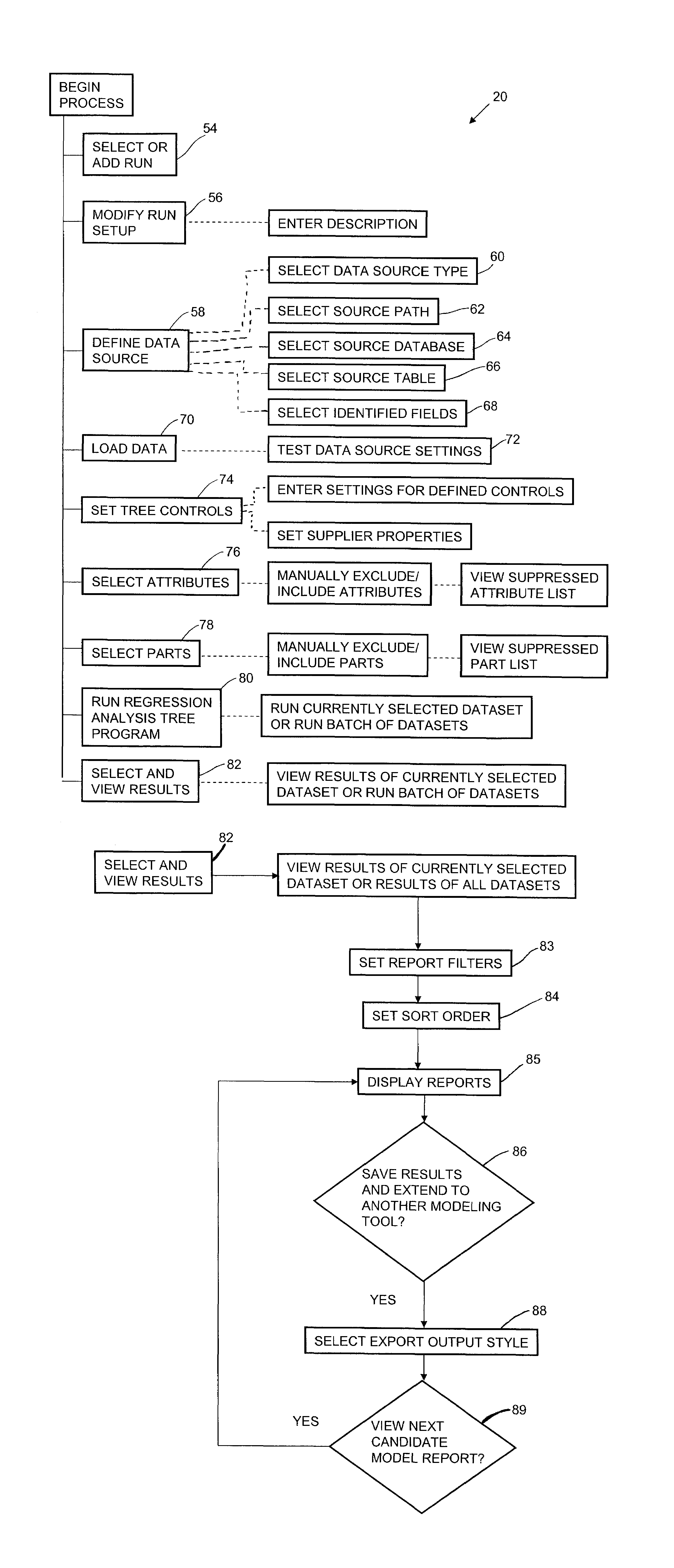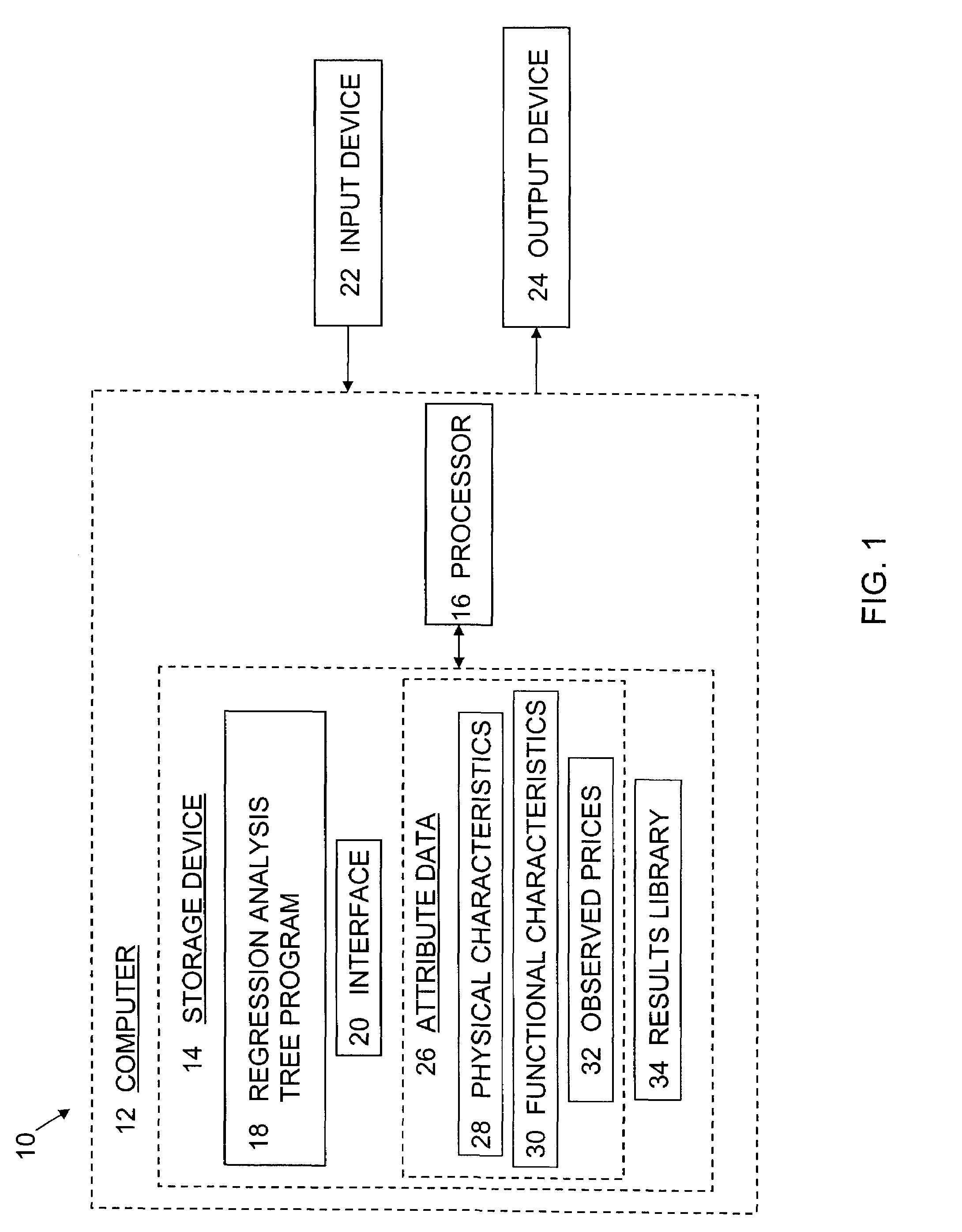Optimized parametric modeling system and method
- Summary
- Abstract
- Description
- Claims
- Application Information
AI Technical Summary
Benefits of technology
Problems solved by technology
Method used
Image
Examples
Embodiment Construction
[0032]Referring to FIG. 1, there is shown a control system, generally indicated by reference number 10, according to one preferred embodiment of the present invention. Generally, the system 10 enables the implementation of an optimized parametric modeling process through control and automation. As described in greater detail below, the system 10 filters out certain attributes from a plurality of attributes and then builds a tree of regression formulas by using a modified forward stepwise regression process. The system 10 also selects and produces regression results for the untested attribute subsets of the tree branches which meet certain criteria. The system 10 further includes a query and reporting facility for filtering, selecting, ranking, and sorting the regression results, which in turn allows the regression results to be outputted, evaluated and compared against each other in an efficient and organized manner. Accordingly, the invention optimizes and substantially improves se...
PUM
 Login to View More
Login to View More Abstract
Description
Claims
Application Information
 Login to View More
Login to View More - R&D
- Intellectual Property
- Life Sciences
- Materials
- Tech Scout
- Unparalleled Data Quality
- Higher Quality Content
- 60% Fewer Hallucinations
Browse by: Latest US Patents, China's latest patents, Technical Efficacy Thesaurus, Application Domain, Technology Topic, Popular Technical Reports.
© 2025 PatSnap. All rights reserved.Legal|Privacy policy|Modern Slavery Act Transparency Statement|Sitemap|About US| Contact US: help@patsnap.com



